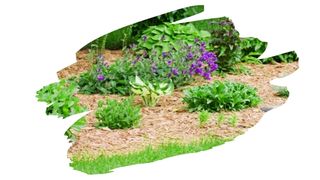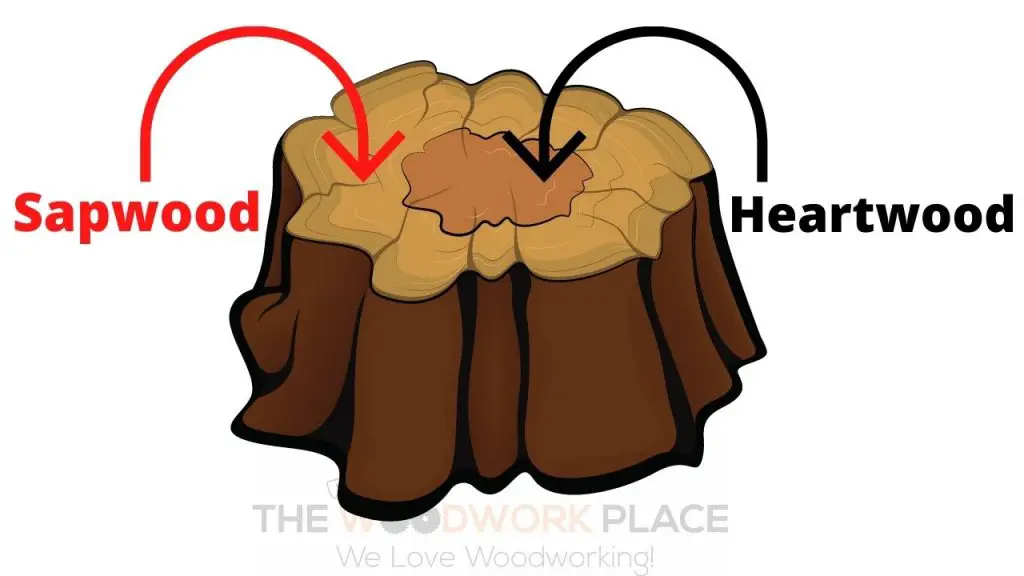Hot composting wood chips is a great way to quickly recycle wood waste and turn it into fertilizer. Not only are you helping to enrich garden soil, you’re also reducing waste too.
But, scattering wood chips around your backyard is not the most effective way to use wood chips as mulch.
So, in this post you’ll discover what really makes hot composting so effective at breaking down wood chips. We also explain the mysterious C:N ratio, and why it holds the key to wood chip decomposition.
And keep reading to find out how left over food from your pantry can help fast-track wood chip decomposition.

This post may contain affiliate links to products that we receive a commission for (at no additional cost to you). Learn more here.
What Is Hot Composting?
If you simply left wood to naturally decompose outside, it can take months for it to break down. This process of leaving wood chips to decompose at their own pace, is called cold composting.
But, hot composting involves speeding up this process by raising the temperature. You see, at higher temperatures, microbes work harder at decomposing wood chips.
Now, you can create this environment artificially by using hot composting bin equipment. These specially designed containers can keep wood chips in an environment that’s consistently between 104°F (40°C) and 140°F (60°C).
At these higher hotter temperatures, composting material (whether it be wood, garden waste or food), can decompose in a fraction of the time.
Related Post: Is Rotten Wood Good For A Compost Bin? (What To Do With Rotten Wood)
Are Wood Chips Good For Soil? Can You Really Compost Wood Chips?
Wood is obviously a natural organic material. And after it’s decomposed, it is ideal for helping to enrich garden soil.
In fact, studies have shown that wood mulch helps improve the yield of vegetables, such as lettuce and bean plants.
Will It Take Long For Wood Chips To Turn Into Compost?
Well, the key to decomposition lies in a materials carbon to nitrogen ratio (C:N ratio). This ratio measures how many parts of carbon there is to each part of nitrogen.
To put it simply, this ratio measures the amount of nitrogen contained in any organic material.
The ideal composting material will have a C:N ratio of 30:1. Which means that for each 1 part of nitrogen in it, that material also contains 30 parts of carbon.
This is the ideal ratio for microbes to work in, when it comes to decomposing material.
Why Does The C:N Ratio Of Composting Material Matter?
Nitrogen is key for decomposition, because the bacteria responsible for decomposition, need nitrogen the way we need oxygen.
So, the more nitrogen there is, the more microbial activity can take place. And the greater the microbial activity, the faster the decomposition.
However, if that carbon to nitrogen ratio is very high, (well above 35 parts of carbon to 1 part nitrogen), then that means there isn’t a lot of nitrogen around for microbes to work with.
And this in turn means that those same microbes will leech nitrogen from the soil around them, (in order to keep going with their decomposing).
OK, So What Does This Mean For Wood Chips? What Is Their C:N Ratio?
Well, different parts of any tree have different levels of nitrogen.
For example, tree bark has a C:N ratio of 100-130:1. While wood chips have a much wider C:N ratio range of 100-500:1.
That’s a carbon to nitrogen ratio anywhere from 3x to 16x higher than the ideal ratio for compost!
And How Long Before Wood Chips Decompose When Cold Composting?
If you simply left wood chips scattered about your garden to naturally decompose, those chips will take around 3-6 months to break down.
What’s more, those self-same still decomposing wood chips will suck up so much nitrogen from the soil, that nearby plants will suffer. That’s because those nearby plants also need nitrogen from the soil in order to grow healthily.
Related Post: Is Wood Stain Really Safe For My Vegetable Garden? (What You Need To Know)
Does That Mean You Mustn’t Use Wood Chip Mulch In The Garden?
Not at all, far from it.
You see, after wood chips have decomposed, all of their nitrogen gets released back into soil.
In short, while wood chips decompose, they suck up more than their fair share of nitrogen from soil. But, after they’ve decomposed, they highly enrich soil by releasing nitrogen right back.
So What Can I do To Speed Things Up?
Hot composting alone will significantly cut that 3-6 month waiting time. But, if you also add nitrogen to that pile, you can speed things up even further.
So, add nitrogen-rich composting material to the pile, such as vegetable waste from your pantry, or old grass clippings. This will give microbes the boost they need in order to make quick work of those wood chips.
What’s The Difference Between Wood Mulch And Wood Chips? Wood chips refers to shredded pieces of wood. These chips are made up of pulverized tree bark, leaves, heartwood and sapwood. However, wood mulch simply describes how those pieces are then utilized, namely for composting or landscaping.

To Wrap Up, Here Are The 3 Key Takeaways From This Post…
- 1). Hot composting typically involves using a hot composting bin to help speed up the decomposition of organic material.
- 2). Wood chips take 3 to 6 months to decompose naturally.
- 3). You can speed up the process of wood chip decomposition by adding nitrogen to that pile (in the form of vegetable and/or garden waste).
References:
Gruda, Nazim. “The effect of wood fiber mulch on water retention, soil temperature and growth of vegetable plants.” Journal of sustainable agriculture 32.4 (2008): 629-643.
Carbon-to-Nitrogen Ratio | Science Direct



